Statue Of Gudea: The King-Priest Of Sumerian City Of Lagash In Southeast Mesopotamia
A. Sutherland - AncientPages.com - Ancient ruins and mounds of Mesopotamia have revealed many precious artifacts, thousands of tablets, statuettes, and various other treasures which are now in the Louvre.
Among them there is a statue carved in hard diorite, which depicts the ruling prince, or king-priest of the city of Lagash.
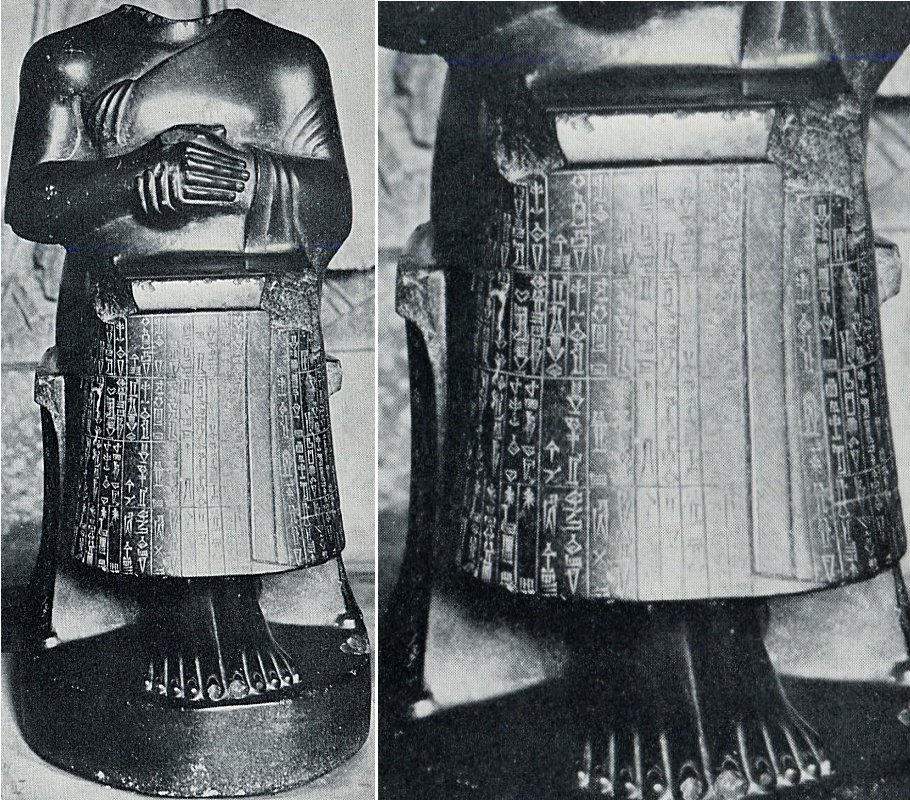
Statue of Gudea, the ruling prince, or king-priest, of the city of Lagash, carved in diorite. Credits: Louvre Museum, Paris
The statue is particularly interesting because it was carved in a style, which was unknown in Mesopotamia at that time.
This fascinating masterwork in diorite and some other valuable artifacts were dated back to 4000 and 3000 BC.
After two centuries of rule, the Akkadian Empire ceased to exist and during the succeeding fifty years, local kings ruled independent city-states in southern Mesopotamia.
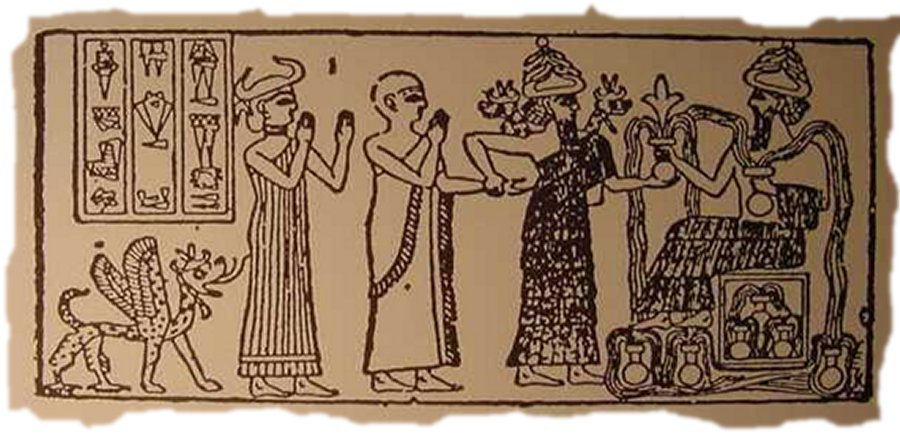
Impression from a cylinder seal used by Gudea of Lagash - the mighty prince of early Babylonian times.
Among the remains of the ancient city-state of Lagash located in Southern Mesopotamia, there are Sumerian literary hymns, prayers and statues of its kings as well as under the rule of Gudea (ca. 2150–2125 BC) and his son Ur-Ningirsu (ca. 2125–2100 BC).
Inscriptions mention temples built by Gudea in Uruk, Nippur, Adab, Ur and highlight Gudea’s achievements regarding the building of irrigation channels and the creation of valuable gifts to the gods.
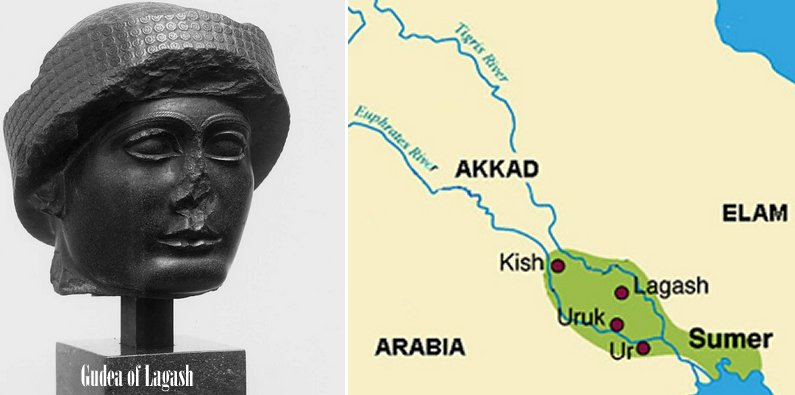
there are Sumerian literary hymns, prayers and statues of its kings as well as under the rule of Gudea (ca. 2150–2125 BC) and his son Ur-Ningirsu (ca. 2125–2100 BC).
Excavations revealed more than two dozen statues depicting Gudea and all of them express his deep religiousness and his many achievements of great value, mainly temple-building and restoration. These carved masterpieces of Sumerian craftsmen express even more, namely dignity, serenity and formality that represent the Sumerian vales.
Gudea possessed great influence in Sumer during his 20-year-long reign; he was usually called ‘King Gudea of Lagash’. However, Gudea preferred to be careful and not to call himself king (‘Lugal’) but rather merely Ensi, (town-king or governor).
This indicates the growing influence of Gudea and his political power in Sumer.
He was succeeded by his son Ur-Ningirsu.
Written by – A. Sutherland AncientPages.com Staff Writer
Copyright © AncientPages.com All rights reserved. This material may not be published, broadcast, rewritten or redistributed in whole or part without the express written permission of AncientPages.com
Expand for referencesMore From Ancient Pages
-
 3,000 Years Ago Human Activity Destroyed Vegetation And Irreparably Damaged The Timna Valley Environment
Archaeology | Sep 23, 2022
3,000 Years Ago Human Activity Destroyed Vegetation And Irreparably Damaged The Timna Valley Environment
Archaeology | Sep 23, 2022 -
 Why Have So Few Who Have Seen This Mysterious Victorian-Era Entity Survived?
Featured Stories | Sep 8, 2024
Why Have So Few Who Have Seen This Mysterious Victorian-Era Entity Survived?
Featured Stories | Sep 8, 2024 -
 Spectacular Olduvai Gorge And Early Hominid Fossils Found In East Africa
Archaeology | Nov 26, 2016
Spectacular Olduvai Gorge And Early Hominid Fossils Found In East Africa
Archaeology | Nov 26, 2016 -
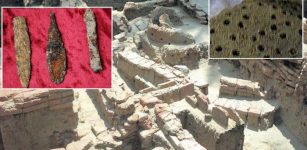 Keeladi, India: Ancient Residents Along Vaigai River Had Adopted Highly Progressive Technologies
Archaeology | Aug 28, 2020
Keeladi, India: Ancient Residents Along Vaigai River Had Adopted Highly Progressive Technologies
Archaeology | Aug 28, 2020 -
 New Dating Of Intriguing Cave Art Reveals History Of Puerto Rican People
Archaeology | Oct 19, 2023
New Dating Of Intriguing Cave Art Reveals History Of Puerto Rican People
Archaeology | Oct 19, 2023 -
 First Egyptian Middle Kingdom Tomb Unearthed In South Asasif Necropolis In Luxor
Archaeology | Nov 5, 2024
First Egyptian Middle Kingdom Tomb Unearthed In South Asasif Necropolis In Luxor
Archaeology | Nov 5, 2024 -
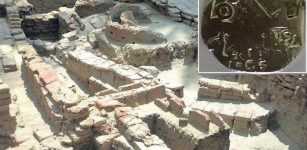 Keeladi Ancient Site Of Tamil Nadu – A Punch-Marked Silver Coin Unearthed
Archaeology | Jul 31, 2021
Keeladi Ancient Site Of Tamil Nadu – A Punch-Marked Silver Coin Unearthed
Archaeology | Jul 31, 2021 -
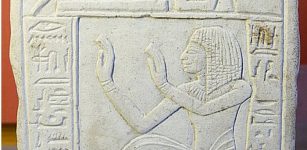 Meretseger: Theban Cobra Goddess Who Presided Over The Valley of The Kings
Egyptian Mythology | Jul 10, 2021
Meretseger: Theban Cobra Goddess Who Presided Over The Valley of The Kings
Egyptian Mythology | Jul 10, 2021 -
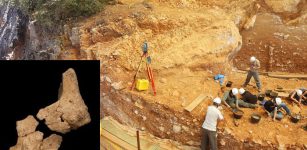 ‘Face Of First European’ – Oldest Fossil Of European Human Ancestor Found At Spain’s Atapuerca Archaeological Site
Archaeology | Jul 9, 2022
‘Face Of First European’ – Oldest Fossil Of European Human Ancestor Found At Spain’s Atapuerca Archaeological Site
Archaeology | Jul 9, 2022 -
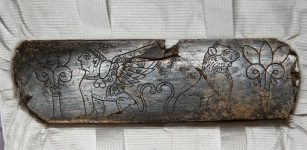 Unique 2,800-Year-Old Ivory Object Unearthed At Hattusa
Archaeology | Nov 14, 2023
Unique 2,800-Year-Old Ivory Object Unearthed At Hattusa
Archaeology | Nov 14, 2023 -
 Mysterious Unknown Strange-Looking Ancient Seafarers – Survivors Of A Now Vanished Race?
Ancient Mysteries | Oct 11, 2022
Mysterious Unknown Strange-Looking Ancient Seafarers – Survivors Of A Now Vanished Race?
Ancient Mysteries | Oct 11, 2022 -
 Minutes Did Not Exist During The Middle Ages
Ancient History Facts | Mar 2, 2016
Minutes Did Not Exist During The Middle Ages
Ancient History Facts | Mar 2, 2016 -
 Mysterious Ancient Falicon Pyramid And Its Complex Obscure History
Featured Stories | Nov 28, 2018
Mysterious Ancient Falicon Pyramid And Its Complex Obscure History
Featured Stories | Nov 28, 2018 -
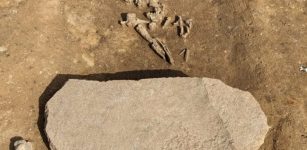 Neolithic ‘Zombie’ Grave Found Near Oppin In Saxony-Anhalt, Germany
Archaeology | Apr 26, 2024
Neolithic ‘Zombie’ Grave Found Near Oppin In Saxony-Anhalt, Germany
Archaeology | Apr 26, 2024 -
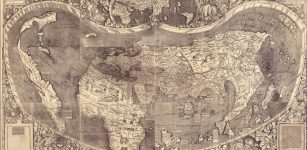 North America Is Named After An Italian Explorer
Ancient History Facts | Mar 1, 2016
North America Is Named After An Italian Explorer
Ancient History Facts | Mar 1, 2016 -
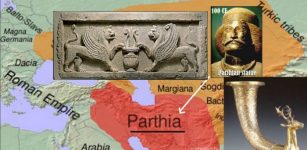 Next Discovery In Tepe Ashraf, Isfahan – Archaeologists May Have Stumbled Upon Ancient Necropolis
Archaeology | Aug 16, 2020
Next Discovery In Tepe Ashraf, Isfahan – Archaeologists May Have Stumbled Upon Ancient Necropolis
Archaeology | Aug 16, 2020 -
 Four Canopic Jars Dated To The 26th Dynasty Unearthed At South Asasif Necropolis, Luxor
Archaeology | Jun 27, 2018
Four Canopic Jars Dated To The 26th Dynasty Unearthed At South Asasif Necropolis, Luxor
Archaeology | Jun 27, 2018 -
 Kuthodaw Pagoda – ‘The World’s Largest Book’ Carved In 729 Marble Slabs
Featured Stories | Feb 24, 2018
Kuthodaw Pagoda – ‘The World’s Largest Book’ Carved In 729 Marble Slabs
Featured Stories | Feb 24, 2018 -
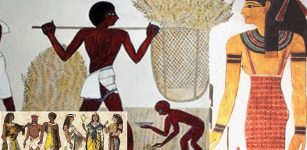 Clothing And Jewelry In Ancient Egypt – How Did The Ancient Egyptians Dress?
Ancient History Facts | Jun 7, 2020
Clothing And Jewelry In Ancient Egypt – How Did The Ancient Egyptians Dress?
Ancient History Facts | Jun 7, 2020 -
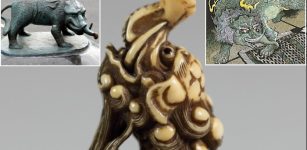 Legend Of Baku – The Dream Eater – Was It An Ancient Supernatural Being?
Featured Stories | Feb 15, 2023
Legend Of Baku – The Dream Eater – Was It An Ancient Supernatural Being?
Featured Stories | Feb 15, 2023
